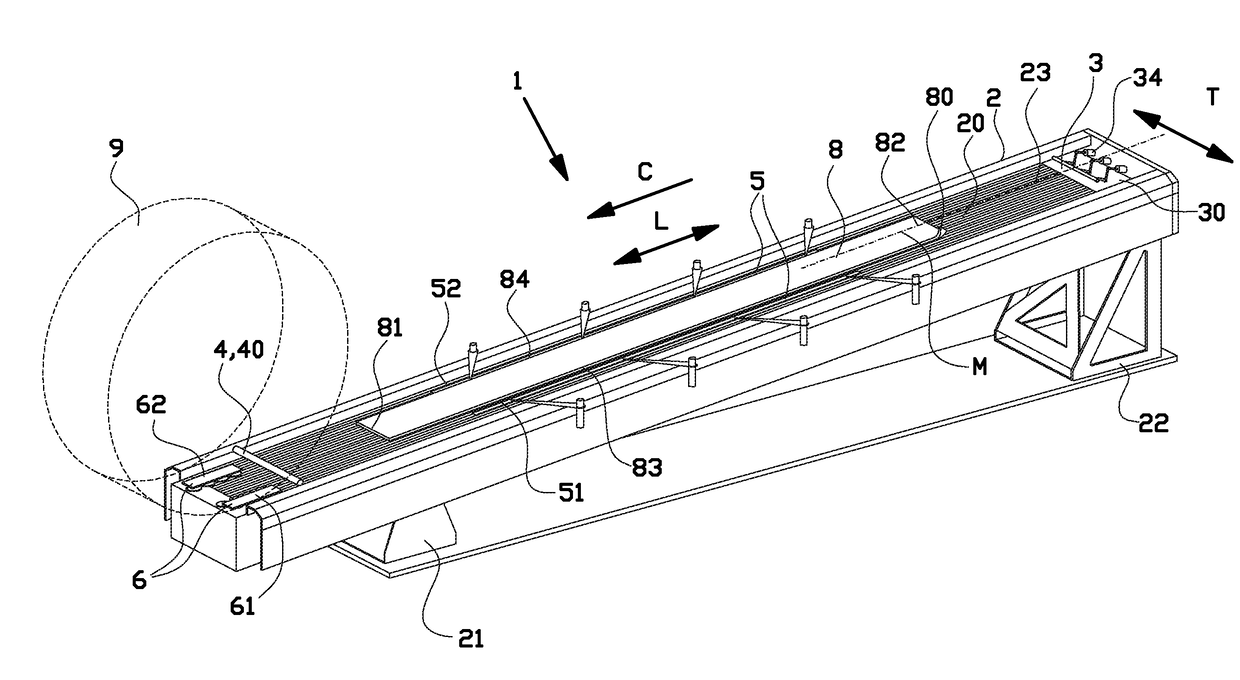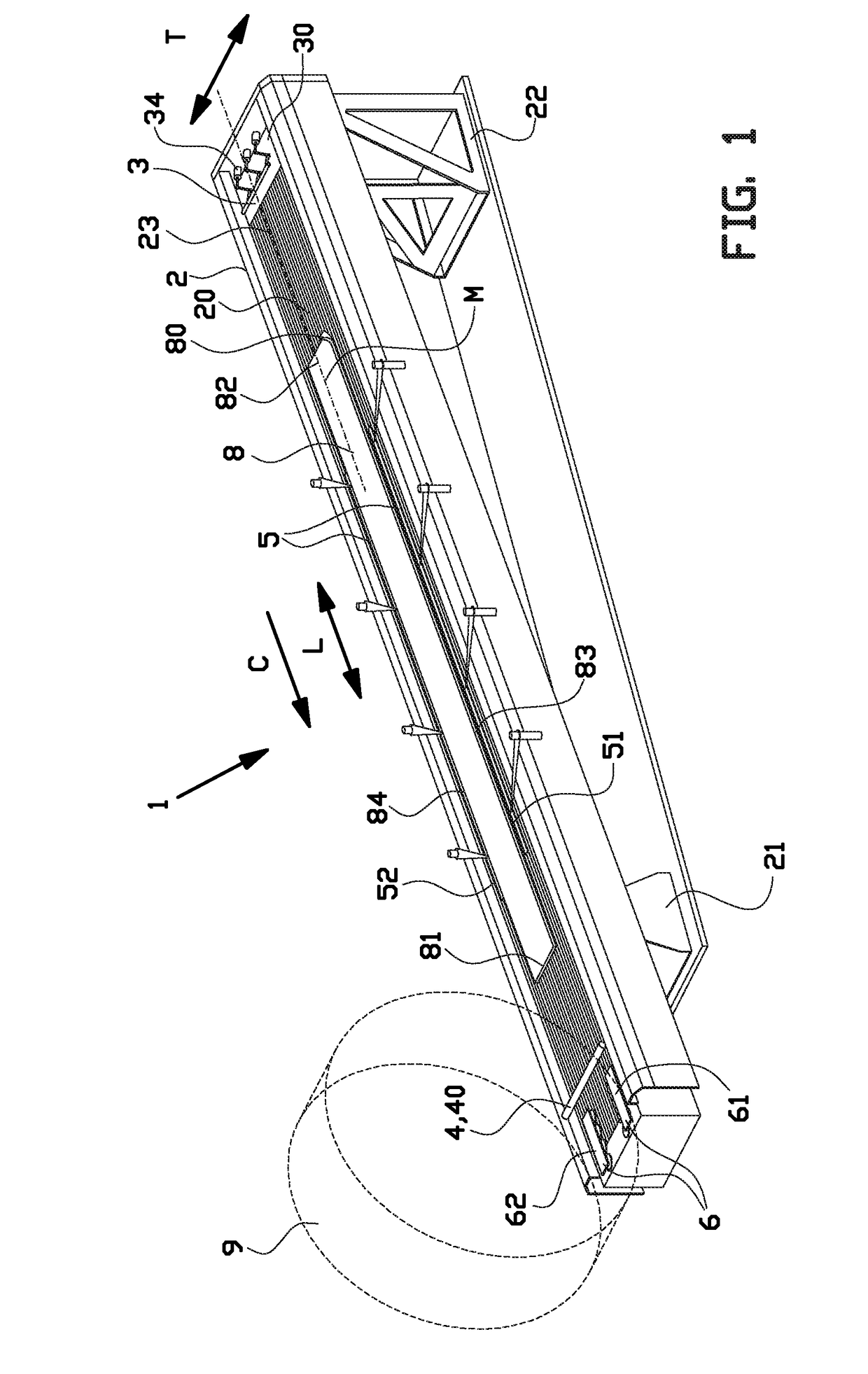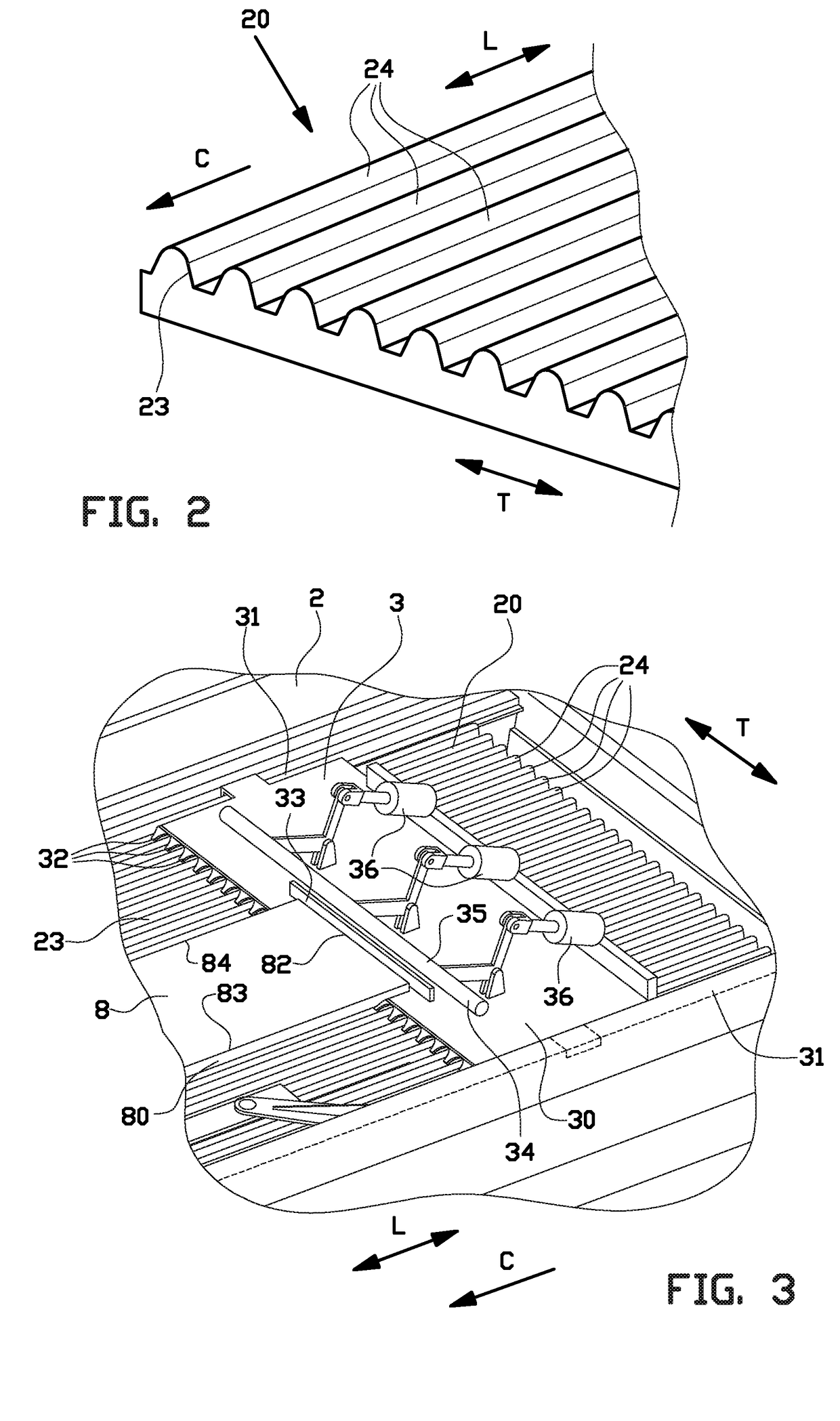Conveyor and method for conveying a tire component
a technology applied in the field of conveying and tire components, can solve the problems of reducing the resistance or friction of sliding of the support surface with respect, affecting and fundamentally different elastic properties of rigid articles from elastic ones, so as to facilitate the sliding of the tire component and improve the centering of the tire component. , the effect of reducing friction
- Summary
- Abstract
- Description
- Claims
- Application Information
AI Technical Summary
Benefits of technology
Problems solved by technology
Method used
Image
Examples
Embodiment Construction
[0051]FIG. 1 shows a conveyor 1 according to the invention, for conveying a tire component 8 towards and / or into abutment with a drum 9.
[0052]In this exemplary embodiment, the tire component 8 is a freshly produced tread 8 for retreading purposes and the drum 9 is a retreading drum 9. Retreading is a remanufacturing process in which an old tread of a worn tire, supported on the retreading drum 9, is buffed away from a carcass (not shown) and replaced by the fresh tread 8 supplied by the conveyor 1. The conveyor 1 according to the invention may however also be used for conveying other tire components in other tire building processes.
[0053]As shown in FIG. 1, the conveyor 1 comprises a support track 2 that defines a support surface 20 for supporting the tire component 8. The support track 2 is provided with feet 21, 22 that are placed on a factory floor and that hold the support surface 20 at a certain height from the factory floor. In this case, the support surface 20 extends under a...
PUM
| Property | Measurement | Unit |
|---|---|---|
| distance | aaaaa | aaaaa |
| distance | aaaaa | aaaaa |
| friction | aaaaa | aaaaa |
Abstract
Description
Claims
Application Information
 Login to View More
Login to View More - R&D
- Intellectual Property
- Life Sciences
- Materials
- Tech Scout
- Unparalleled Data Quality
- Higher Quality Content
- 60% Fewer Hallucinations
Browse by: Latest US Patents, China's latest patents, Technical Efficacy Thesaurus, Application Domain, Technology Topic, Popular Technical Reports.
© 2025 PatSnap. All rights reserved.Legal|Privacy policy|Modern Slavery Act Transparency Statement|Sitemap|About US| Contact US: help@patsnap.com



